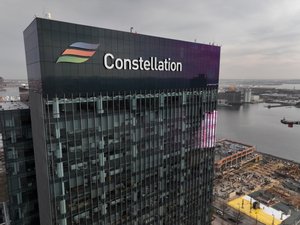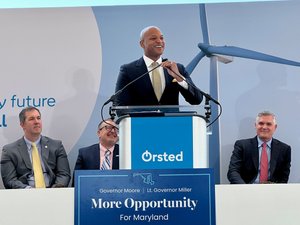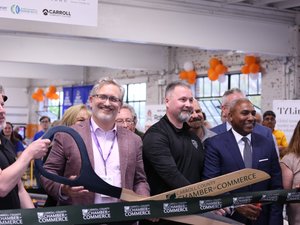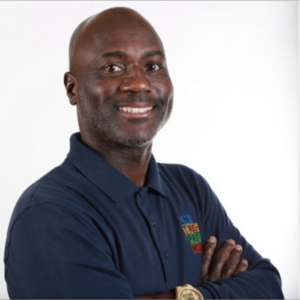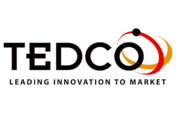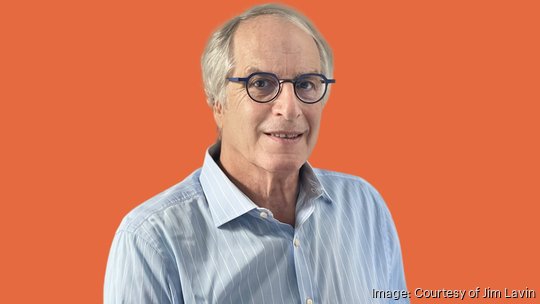
A Baltimore company spun out of Johns Hopkins has raised $3 million in funding with the goal of making a promising technology to combat global warming more efficient.
EDAC Labs CEO James Lavin said his firm will use the money to prepare for a commercial launch of a carbon capture device that extracts carbon dioxide from the atmosphere and transforms the gas so it can be stored or used in commercial products. The successful seed round comes as the federal government is launching a $3.5 billion program to expand the carbon capture industry.
The round was led by the Grantham Foundation for the Protection of the Environment, a fund focused on early-stage environmental companies, and angel investors. Lavin announced the closure of the round on Tuesday after starting to raise funds last fall. The company had to wait until a license agreement with Johns Hopkins closed in May before finalizing the deal. Johns Hopkins University Whiting School of Engineering Associate Professor Chao Wang developed the technology and currently serves on the company’s board.
EDAC Labs plans to grow its 10-person staff within six months to prepare for a commercial launch by the end of 2024. The company wants to target mining operations seeking to sequester carbon and sell its base technology to carbon capture companies that want to operate more efficiently.
Carbon capture offers one of the few realistic solutions to global warming, Lavin said, because it helps the world make up for the emissions of the past.
“We've been emitting carbon dioxide since 1750,” Lavin said. “It's not like [traditional air] pollution, where if it rains a few times, the air gets a lot cleaner. If you stop a dirty smokestack, carbon dioxide stays in the atmosphere for around 100,000 years. Unless you actively remove some of the excess carbon dioxide we put in the air, you can't stop warming.”
The carbon capture technology EDAC uses is based on the same science that has long created entertaining moments in high school or middle school science classes: the explosion of a baking soda and vinegar volcano. In this experiment, vinegar, an acid, and baking soda, a base, combine to create a carbon dioxide explosion. Similarly, EDAC's technology uses a strong base to capture carbon dioxide by reacting with it and forming a carbonate, or salt. When you combine that salt with an acid, carbon dioxide is released as a pure gas, which can then be captured and put back in the ground or combined with other materials.
Other carbon capture technologies also use the same basic chemical process as EDAC. Lavin claims his process takes half the energy of the commercial standard of creating acids and bases for carbon capture and can be implemented without strict temperature or pressure controls.
There is an expanding market for carbon capture supported by the federal government. The U.S. Department of Energy is giving out $3.5 billion to four carbon removal hubs focused on the permanent storage of greenhouse gases. The federal government hopes that each hub will be able to capture and store at least a million metric tons of carbon dioxide.
Carbon capture technology has received some criticism from environmental groups and the United Nations who believe the technology is not yet viable and is a distraction from the work of building up renewable energy sources. Lavin argues the world is reliant on fossil fuels for many aspects of the global economy, from fertilizers to fuel, so decarbonization will be a long process. Carbon capture technologies can buy the world a bit more time as renewable energy catches up to the world’s energy needs, he said.
“We make fertilizer from natural gas and without artificial fertilizer, the earth can’t support more than 4 billion people,” Lavin said. "Ideally, you don't want to kill off people, so I don't see an issue at all [with carbon capture]. We need to continue our decarbonization at a reasonable pace that's consistent with people staying alive and we have to develop and massively scale the removal of carbon dioxide.”
